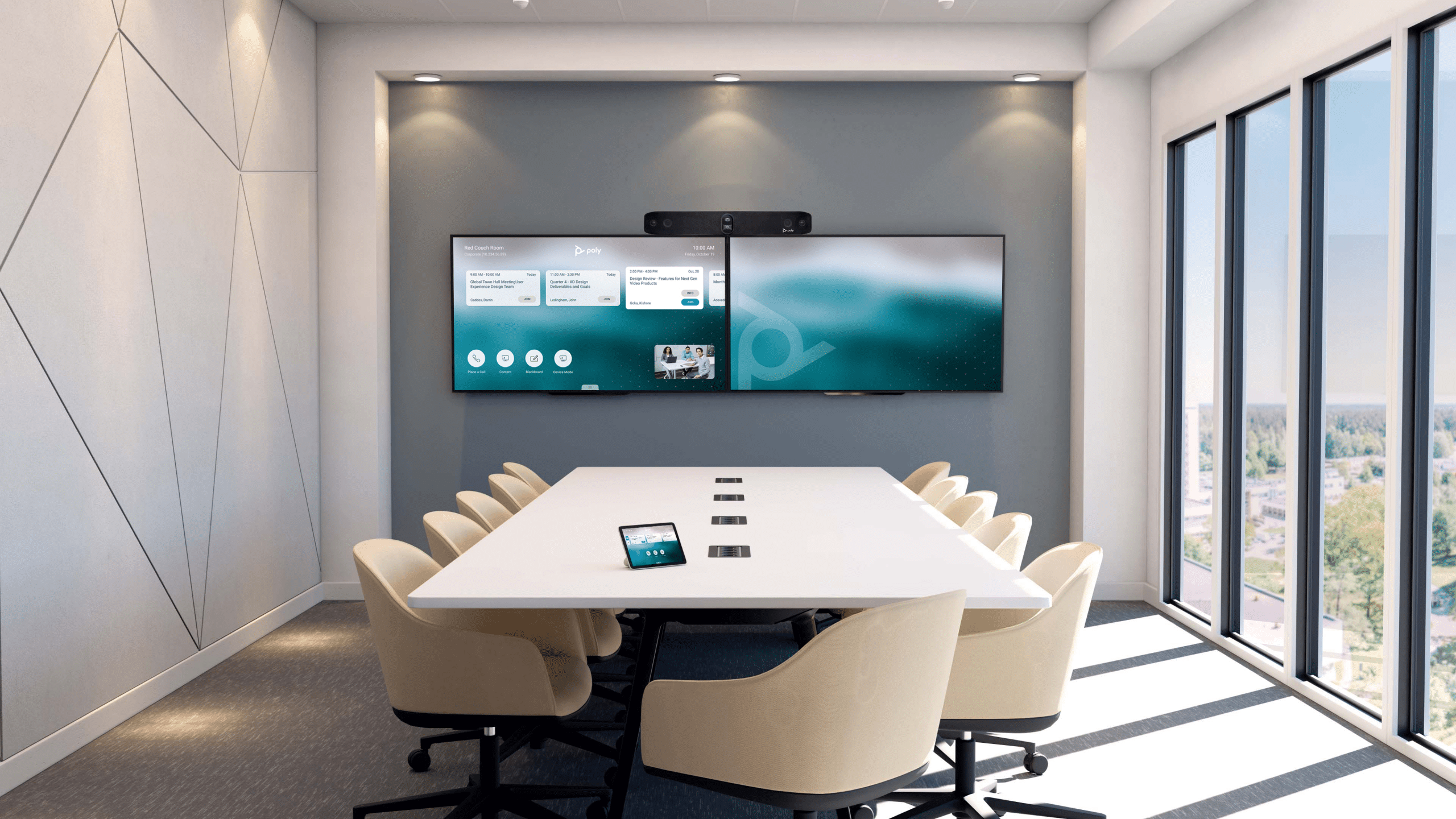One of the most exciting things about technology in the last 15 to 20 years is the rapid increasing our digital learning abilities. We have seen tremendous advances in our opportunities to collaborate with others in completing our tasks in both the world of business and that of education. The number of new products, aimed at collaboration, that hit the market on a regular basis is astounding! In this article, we will introduce you to just one of those products, namely, VIDEO BARS!
The first question you might ask is, “What the heck is a video bar Bar and what do you use it for?”
A Video Bar is a lot like a sound bar which we find in peoples’ homes for their home theatre setups. It’s a rectangular box that typically would be mounted on a wall. Basically, your sound bar at home is made up of only speakers only. A video bar—, for video conferencing—, looks similar but it also has a built-in microphone and cameras, so it’s essentially a video conferencing appliance. It’s suitable for small to medium- sized rooms, not large board rooms, and it works best if the furthest participant is no more than 15 feet away. Generally speaking, that would be aroom of up to about 8 or 10 people.
Video Bars are typically used in a bring-your-own-device setting. It’s It’s a rectangular box on the wall, with camera, microphone, and speakers. People bring their laptops in and connect straight into it in a small huddle room or a small meeting room. They will just use it as a peripheral, “selecting” the camera, the microphone, and the speakers. It certainly works much better than a group of people trying to gather around a laptop, which they will spin on the desk to give everyone a chance to see or be seen; —rather ather a cumbersome method of “speaker tracking!”
Several different options exist, and we sell products from Poly, Logitech, Cisco, and Yealink. The prices of these video bars can range from under $1,000 up to $6,000 depending on the features that you want. Do you want, for example, a 1080p camera or a 4K camera? Do you want a subwoofer built into it for better sound, or an expandable mic so the microphone won’t struggle hearing you? You can get a tabletop- mounted microphone that plugs directly into the video bar. There are some that have cameras with a 90-degree field of view; that would be the basic model. It’s not going to capture people seated at a table on a side wall close to the video bar, but the higher-end ones have a 120-degree field of vision, which that captures everyone in the room. Again, it can’t be stressed enough that these are made for small huddle rooms and small to medium-sized boardrooms. If you get beyond 15 feet, you will want to start looking at integrated, dedicated, optical zoom cameras and central microphones, but we’ll get into those in a future article.
Each of the Video Bar companies has its own little added features. Yealink Meeting Bar A30integrates the camera, microphone, and speakers into an all-in-one system. It has an AI AI-powered camera which will automatically frame the image on the screen and will even track the speakers and zoom in on the person speaking at any given time! This obviously works better than the “spinning laptop method.” The earlier versions of the video bar Bar had a single camera only, for an overall view of the room, but newer models use one stationary camera along with one moveable camera controlled by the AI software to provide the Auto Framing and Speaker Tracking features. It also features Full Duplex HD Audio, Wireless Content Sharing, and Easy Meeting Control using the CTP18 Touch Console.
Poly Studio X50 has a unique acoustic chamber design that allows everyone in the room to be heard clearly, no matter where they’re sitting. Whether the person is 6 feet away or 12 feet away,or even 20 feet away, not only does it make all the volume levels the same, but the microphones are so good you can even hear whispering from the back of the room.
Poly studio Studio also has available an acoustic fence feature for use in a room that is prone to a lot of outside sound. Imagine a small huddle room right by a reception area that’s high traffic, getting a lot of people coming through and having conversations. That can become distracting, .and minimizing this background noise it would be helpful for the meetings that are being held in that room. That’s what acoustic fence is. It creates a virtual fence around the meeting. It will capture the voices of the people in the room, but it will block distracting voices and sounds from outside.
The built-in software with these video Video bars Bars is so awesome, the meetings can be standalone, or bring-your-own-device, or you can hook up with a PC in that meeting space and just use that as your as your meeting appliance. You don’t necessarily have to bring a laptop. If you wish, you can share from your phone using Miracast, Apple screen sharing, or Google share. This all contributes to meeting efficiency and a better flow to information sharing. When the screen comes on, no matter where you log in from, you feel like you are in the actual meeting.
No more struggling to hear what is being said or watching images of the ceiling from a poorly directed and shaky camera. The flexibility of the software gives you many options as to how you will interact with the system.
Check the links below for a few short demonstration videos which may give you a better picture of the video bars Bars in use.:
Poly Studio Acoustic Fence Demo Video (FR) https://youtu.be/AVUHuM7wrbc
Poly Studio X50 – Mic Demo Video (FR) https://youtu.be/YNiGtmXLnd8
Yealink MeetingBar A30 – Microsoft Teams https://youtu.be/_0dDu9-gvaM

